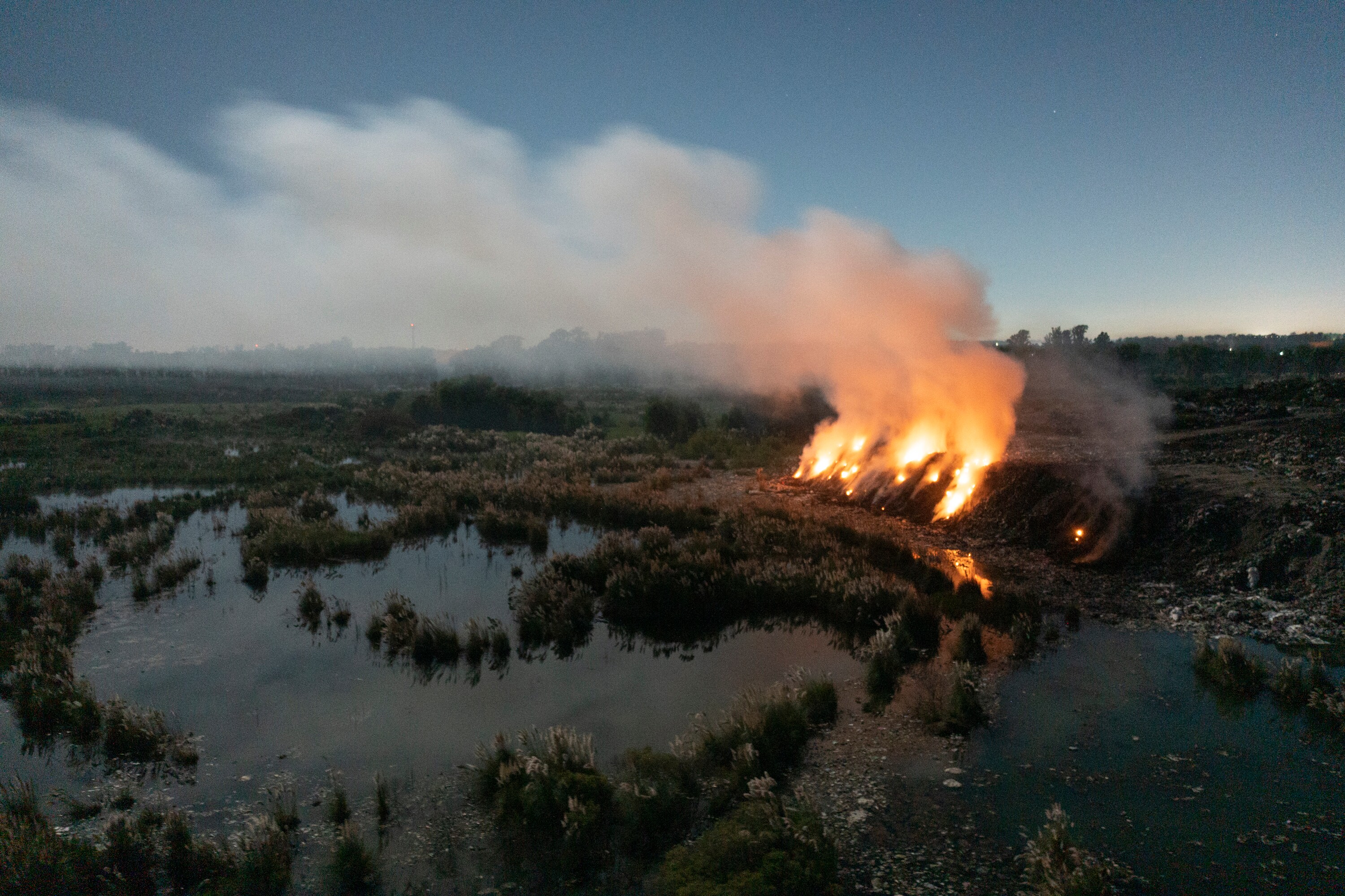At 10 a.m., Joana Enriques begins her shift to feed the fire. In Luján, a city 50 miles from Argentina’s capital of Buenos Aires, exists “La Quema,” an open-air dump that translates to—The Burning. Waste pickers like Enriques collect and sort through heaps of garbage to feed the dump’s fire and their families.
“All my family has always lived here looking for work,” Enriques said.
"Most of us don’t know how to do anything else but recycle and be here."
As workers are obliged to the dump’s demands, smoke billows into the humid sky of Luján. The air thickens with putrid sulfur stench and dust when one of the 15 trucks passes by the 700-meter dirt path to unload around 180 tons of cargo onto La Playa—“The Beach”—the landing zone of trash. With their piercing gaze and talons, scavenger birds are undeterred, cutting through the haze and landing only when they find something of value.
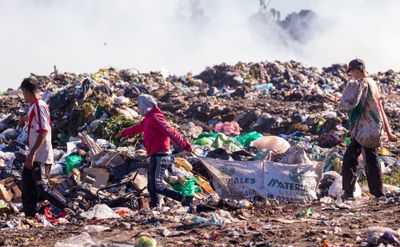
Between rotting onions, teddy bears, discarded school notebooks, dirt and the occasional dead goat, workers of La Quema, much like scavenger birds, dig for gold across the 27-acre scape.
Gold in the wasteland is plastic, cardboard and metals. The workers, known by the community as “cartoneros,” or cardboard pickers, sort each material into a large white plastic bag to hand over to El Indio, “The Indian,” who acts as a middleman by selling the raw materials picked by the dump workers to industries seeking out the inventory. The Indian takes most of the cut while the cartoneros get a slim commission, but it is enough for them to survive.
The weight of desolation is almost unapproachable, but Enriques finds the scene familiar.
“We always came here as kids, even just to play with the birds,” Enriques, 26, said. “Most people don’t just come here to work—women come looking for clothes or they sell things they find at fairs.”
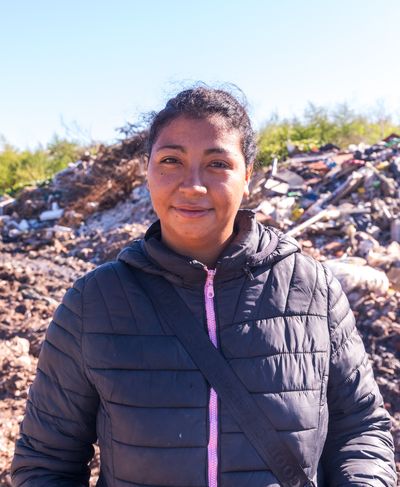
Her family has worked here for generations, and she has worked at the dump since she was 12.
La Quema is the biggest open-air dump in Argentina and one of the largest in South America. It is also illegal. The burning of waste releases toxins into the air, and trucks plow through the sea of trash, crushing birds or the occasional worker in the field. While the waste pickers are willing to take on this risk, it conflicts with people living around the acres-long waste pile in Luján.
Environmentalists in Luján have urged the closure of La Quema. In December, a federal court ordered cleanup efforts to resume converting the dump to an environmental center. The court also called for Luján’s municipal government to stop waste disposal and to work on incorporating “informal recyclers” into reformed waste management processes.
Despite this effort for future inclusion, cartoneros like Enriques are resisting the court’s efforts to protect their ability to provide for themselves. The resistance is exacerbated by the poverty brought on by Argentina’s President Javier Milei’s new austerity programs, which have contributed to the rising unemployment rate and doubled the population of cartoneros.
From Waste to Worth
POPULAR ECONOMY
Cartoneros are not new to Argentina. In 2001, the country experienced a massive economic upheaval after deregulating its economy and increasing dependency on the International Monetary Fund.
According to the World Bank, the economic crisis placed 53 percent of Argentines under the poverty line. It forced 30,000 families into life as cartoneros, Al Jazeera reported in 2007.
Following the economic collapse, cartoneros became so prominent that El Tren Blanco, a white train, was established to transport them from the city to the slum to collect waste. Eventually, the train was discontinued due to issues managing cartoneros.
Without government support, organizations like Federación Argentina de Cartoneros, Carreros y Recicladores emerged to formalize workers' rights for waste pickers, according to a report from the Friedrich Ebert Foundation.
Today, unions and cooperatives have formed where cartoneros can work within the formal sector to gain protection and contracted pay with municipal governments. While these avenues are present, many Argentines turn to the informal sector, leading many to work in illegal dumping sites like La Quema.
“There are factories,” Enriques said. “But you need an education, and the pay is not the same, you can work there and still make what you could earn here in a day.”
The turn to the informal sector is more prominent with Milei’s administration. Since taking office, Milei has implemented aggressive austerity measures, slashing welfare programs that make paying rent and access to healthcare possible in the country. While Milei has touted falling inflation and poverty rates, as reported by the National Institute of Statistics and Census of Argentina, the presence of cartoneros tells a different story.
Eduardo Donza, a professor at the University of Buenos Aires specializing in the labor market, social inequality and poverty, said the rate of informal labor continues to increase nationwide.
An estimated 33% of the Argentine workforce operates within what economists like Donza call the “popular economy,” where jobs diverge from traditional employment and lack labor protections. Cartoneros are a part of this popular economy. These professions grow out of survival as the labor market fails to support its citizens, he said.
"At levels that are very close to the levels of subsistence, this implies issues of great exclusion and the impossibility of acquiring minimal food."
Enriques said there are other jobs in Luján, such as factories, but they require an education. This lack of opportunity puts those like Enriques in the 33%, but she said having control over her labor is worthwhile.
“It’s easier here, you just come if you feel like it,” Enriques said. “What I wanted was not to have a boss controlling me, not to have a set schedule. You decide your own time.”
However, this sense of stability is under threat as environmentalists have raised concerns, leading to federal court intervention.
THE ENVIRONMENT
The flames of The Burning scorched Sergio Esteban Almada’s mind and body beginning in 1993. It began with psoriasis, a skin disease causing itchy rashes when he was six. His father worked at the dump in 1970, when it opened. Almada followed suit.
"It was a sea of waste. Waste upon waste."
The rashes grew, and so did the humiliation. He was bullied in school for how he looked. His skin cracked and bled, making it hard to move.
“The doctor said, 'You won’t die from this, but you’ll die with this,’” Almada said. “That was at age 12, and life just kept getting harder.”
Almada developed arthritis by the age of 37 and was told he could not continue working at La Quema. All of his joints were swollen, and he was bedridden for 10 years. His spine fused, and now, he cannot turn his head or straighten his back.
“I was ashamed,” Almada said. “It was hard to move, but the real pain was the shame; I couldn’t watch myself.”
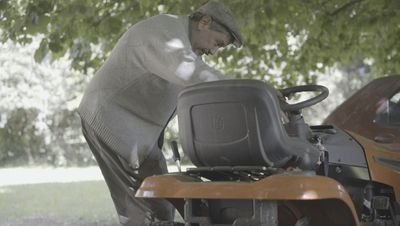
That changed when Almada started protesting the dump.
“In a way, the fight also helped me overcome that shame and push toward a solution,” he said.
Almada, president of the San Pedro neighborhood association, lives a mile from the landfill and has spent the past two decades petitioning the courts to close the dump.
Almada’s granddaughter and son both have asthma and pulmonary issues. When his family went to the doctor, they were told to stop smoking at home, but no one did. He racked his mind for answers and then realized it was the dump. He even lost his baby to toxic fumes from the dump.
"The little time they’ve lived, it’s like they’ve been exposed to cigarettes constantly."
Almada said the health consequences he, his family and the community face motivate him to advocate.
Almada said that sixty percent of the community suffers from chronic illnesses such as skin, bone and respiratory diseases and miscarriages for women.
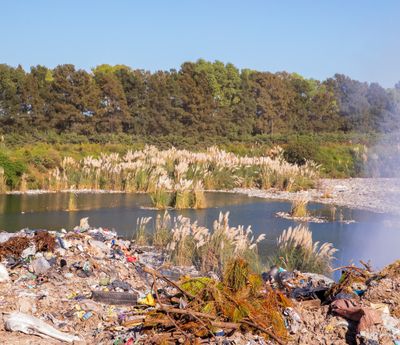
Almada took all of these complaints and evidence of La Quema’s impact on the community to the municipal government. In 2019, Juan Cabandié, the Minister of Environment and Sustainable Development of Argentina, visited Luján to begin plans to build an environmental center.
The environmental center will include a treatment plant and a final disposal center. The center would be equipped with conveyor belts to sort through trash and water treatment infrastructure.
It would also include a daycare center to allow workers to earn while having their children cared for. It would also be government-affiliated, providing a standardized pay structure.
After La Quema’s closure, a sanitary landfill to dispose of waste that wasn’t sorted would be formed in the neighborhood of Sucre, about two miles away from the dump.
Almada said the ministry’s visit filled environmentalists with hope for La Quema’s closure, but the cartoneros grew angry that advocacy of “La Quema Kills” would leave them out of a job.
Almada began collaborating with cartoneros like Joana and explained the plan of building an environmental center to provide them with dignified working conditions.
The Inter-American Development Bank provided a $12 million loan in 2008 to address open-air dumps in Argentina. After Cabandié visited, the loan was renewed to close the dump, and land was acquired to build the environmental center.
Before construction could begin, the center hit an obstacle in 2022 when Viviana Novelle, a lawyer who owns a garden approximately 4,000 feet from where the new sanitary landfill would be, filed a lawsuit against the center’s establishment.
THE FIGHT TO KEEP THE DUMP OPEN
When Novelle’s lawsuit was heard, a federal court judge paused the center’s development for 24 hours. However, the original judge stepped down from the case, and a new judge lifted the pause.
In 2023, the court froze progress on the new center and stopped waste dumping at La Quema to halt environmental damage. Enriques said she believes the dump is good for the community, but still testified to keeping the dump open to protect workers’ income.
Enriques acknowledged the environmental and health impacts La Quema has on workers and the wider community, but said that waste workers in Argentina lack opportunities. She added that the economic conditions in Argentina make working at the dump unavoidable.
“I’ve had health problems because of this, but my coworkers still come because it’s their livelihood,” Enriques said.
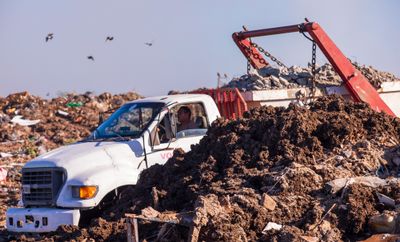
The court freeze was lifted in 2024, and the center resumed construction. Despite this court mandate, the center has been stalled as the Milei administration is reluctant to utilize government funds to carry out the project.
Under Milei’s sweeping austerity policies, the Environment Ministry, which called for the center’s construction, was dissolved.
“There’s no one left to talk to, no one to file complaints with,” Almada said. “We know there’s little we can do.”
MILEI’S IMPACT
As community members and waste pickers advocate for the environmental center, cooperative members a couple of blocks away live the reality Almada and Enriques advocate for.
Marcelo Santiago Viagra, 53, said he has worked as a recycler at the cooperative, “Open Sky, Three Stars,” for the number of World Cups Argentina has won.
“Ever since I’ve been here, for me, it’s a family,” Viagra said. “We’re always there for each other.”
Viagra collects materials from the street or homes, including plastic, PVC and cardboard. Although those at Open Sky pick similar materials like the cartoneros, those working at the collective do not identify with the title and instead prefer “recycler.”
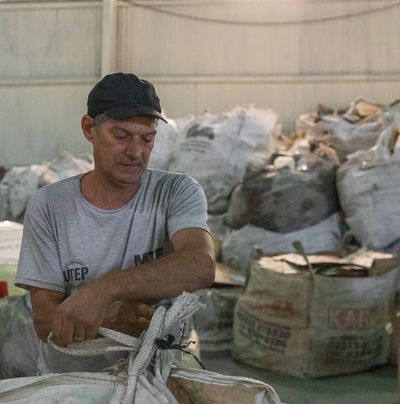
To the recyclers, there is a distinction between them and those at La Quema. At the illegal dump site, each person works for themselves, whereas Open Sky is a collective, where earnings are split fairly among workers, Viagra said.
Cooperative members receive protective gear, work under a roof, follow a set schedule from 8 a.m. to 2:30 p.m. and receive payments through a contract with the municipality of Luján, he said.
“We’re all equals here,” he said.
However, this formalized payment structure is undermined by Milei’s controversial legislative proposal, Ley Bases, which opens the door to importing foreign raw materials from Brazil. These materials are cheaper for industries to purchase than from cartoneros.
Now that companies can buy raw materials cheaper from other countries, waste pickers have an incentive to turn to La Quema to get paid based on the amount of material each cartonero brings to The Indian.
"A government like Milei’s, that focuses on balancing the books, all the doors start to close. Everything becomes obstacles, restrictions."
Cooperatives like Open Sky symbolize hope for cartoneros in La Quema and those picking trash on the streets of the City of Buenos Aires. However, cooperatives have limits on how many workers they can employ. The City of Buenos Aires currently holds contracts with 12 cooperatives, who formally employs 6,500 recyclers and are not currently expanding.
“In an economic crisis and social crisis, you cannot keep incorporating more workers into the cooperatives or expanding the quota,” said Bárbara McCluskey, adviser to the City of Buenos Aires’ Urban Hygiene Department.
Beyond health consequences, cartoneros also face police harassment on the street for identification, Viagra said. If cartoneros are missing identification, they have to pay bribes or risk arrest.
Enriques said that drone surveillance from those trying to delegitimize the environmental center is also a threat.
“They've sent drones, recorded them, filmed them,” Enriques said. “Intimidated them to make them react and thus generates more conflicts.”
The opposition from those against the environmental center poses a challenge for cartoneros to adapt to the economic crisis with dignity. Almada, however, remains hopeful.
“God willing, may we live to see the Environmental Center finished, the dump completely closed and covered, and turned into what’s been promised—a green park on top of that mountain of garbage,” he said.
But after years of litigation in the courts, the fight over the environmental center and lack of understanding of the workers and their plight, Enriques is skeptical.
“Don’t sell me dreams,” she said.

